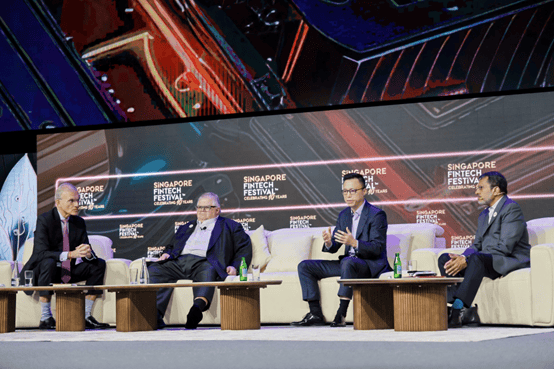
Posted by Wanda Rich
Enterprise software is caught in a paradox. On the one hand, the enterprise software company has severe pressure to scale quickly, integrate the latest technology, and provide quick digital experiences to its customers. On the other hand, they remain shackled by the legacy systems and slow development cycles of yesteryear. A report states that nearly 70% of digital transformation efforts fail. The failure is due to fragmented systems, unclear ownership, and outdated development practices.
Meanwhile, the global datasphere is expanding at a tremendous pace. IDC also predicts that by 2025, the world will generate 175 zettabytes of data annually. Instead of this data being "noise," it stands as a demand for processing systems capable of timely interpreting information to act. Enterprise leaders are interested in solutions that scale well, are secure, and ensure user experience, exactly those that can evolve fast with business.
In the midst of this chaos, companies considered these low-code/no-code platforms to alleviate the pressure. According to Gartner, 70% of new enterprise applications will be constructed with low-code or no-code platforms by the end of 2025. The promise is surely enticing: allow business people to develop solutions themselves, accelerate innovation, reduce the load on IT.
But even as companies adopt these technologies, deeper systemic challenges remain. Development teams are overwhelmed, deployment is fragmented, and QA processes are often manual and inconsistent. It is like trying to retrofit a race car while it is already speeding down the track.
That is the moment when a visionary architect, Nagaraju Thallapally, walked into the workshop, not to adjust the system but rather to reimagine it from the ground up. In the midst of the digital transformation of the Michigan Department of Technology, Management & Budget, Nagaraju noticed that the same problems always showed up: departments working in isolation, workflows not in alignment, and resistance to change generally. He realized that the tools alone cannot resolve such problems if a cultural change is required, and also a shift at the architectural level.
He began by championing Microsoft’s Power Platform, particularly Power Apps and Power Automate. His vision was clear: democratize app development by empowering non-technical stakeholders. Instead of waiting months for IT to develop tools, business analysts and operations managers could now prototype solutions in days.
"When we give business users the ability to build their own tools, we don’t just solve problems, we unleash innovation," he shared while discussing his philosophy.
The results were nothing short of transformational. Delivery timelines were cut in half. Business units developed over 60 custom tools internally, slashing dependency on IT and fostering ownership. Employees were no longer passive users; they became creators.
However, Nagaraju knew this decentralization needed guardrails. He introduced automated governance policies to ensure data security and compliance. Access controls, automated documentation, and audit trails were implemented across all apps, ensuring agility didn’t come at the cost of control.
Next came the overhaul of the development lifecycle. To eliminate version control chaos, he implemented Git branching strategies tailored for both enterprise-scale delivery and agile workflows. His team adopted a hybrid approach, Git Flow for structured releases, GitHub Flow for rapid fixes, and Trunk-Based Development for iterative innovation. Automation was key: pull request validations, commit linting, and CI/CD pipelines all streamlined.
In parallel, he tackled one of the most time-consuming bottlenecks: testing. Salesforce, one of the organization’s core systems, had hundreds of user stories to validate each sprint. Manual testing wasn’t just inefficient, it was error-prone.
The architect introduced Provar, a native testing solution for Salesforce, and coached teams on building modular, reusable test assets. These were baked into CI pipelines, enabling regression tests to run with every code push. Manual testing hours dropped by over 60%, while quality scores improved across releases.
Beyond immediate improvements, his architecture philosophy was built on long-term sustainability. He drove an API-first approach across the organization, ensuring every application was designed for integration from day one. Whether connecting microservices or external vendors, this modular architecture allowed teams to scale without rework.
He also pushed for proactive system monitoring and fault tolerance, introducing observability frameworks and resilient infrastructure practices. Cloud costs were trimmed through intelligent scaling and auto-provisioning, saving the organization nearly $1.5 million annually.
This mindset, equal parts technical rigor and creative vision, extended beyond engineering. He mentored cross-functional teams. He also created reusable frameworks and hosted enterprise-wide workshops on architecture patterns, testing strategies, and low-code governance. His influence became embedded not just in systems, but in the culture.
Externally, his whitepapers on scalable architecture and cloud migration have become reference materials for Fortune 500 companies. One such paper, "Modernizing Legacy Systems for Real-Time Intelligence," has been cited in over 40 enterprise transformation roadmaps globally.
The impact is undeniable. Application delivery accelerated by 35%, manual testing efforts halved, and business satisfaction scores soared. But more importantly, the enterprise is now future-ready, built on systems that can pivot, scale, and endure.
As enterprises worldwide prepare for a future of more data, more applications, and more uncertainty, his approach serves as a blueprint. One that proves innovation is not about speed, it is about clarity, purpose, and architecture that bends with change instead of breaking under it. His story is about more than just solving technical problems. It is about changing how we view enterprise development. It should be viewed as a force for empowerment, inclusion, and enduring impact.


